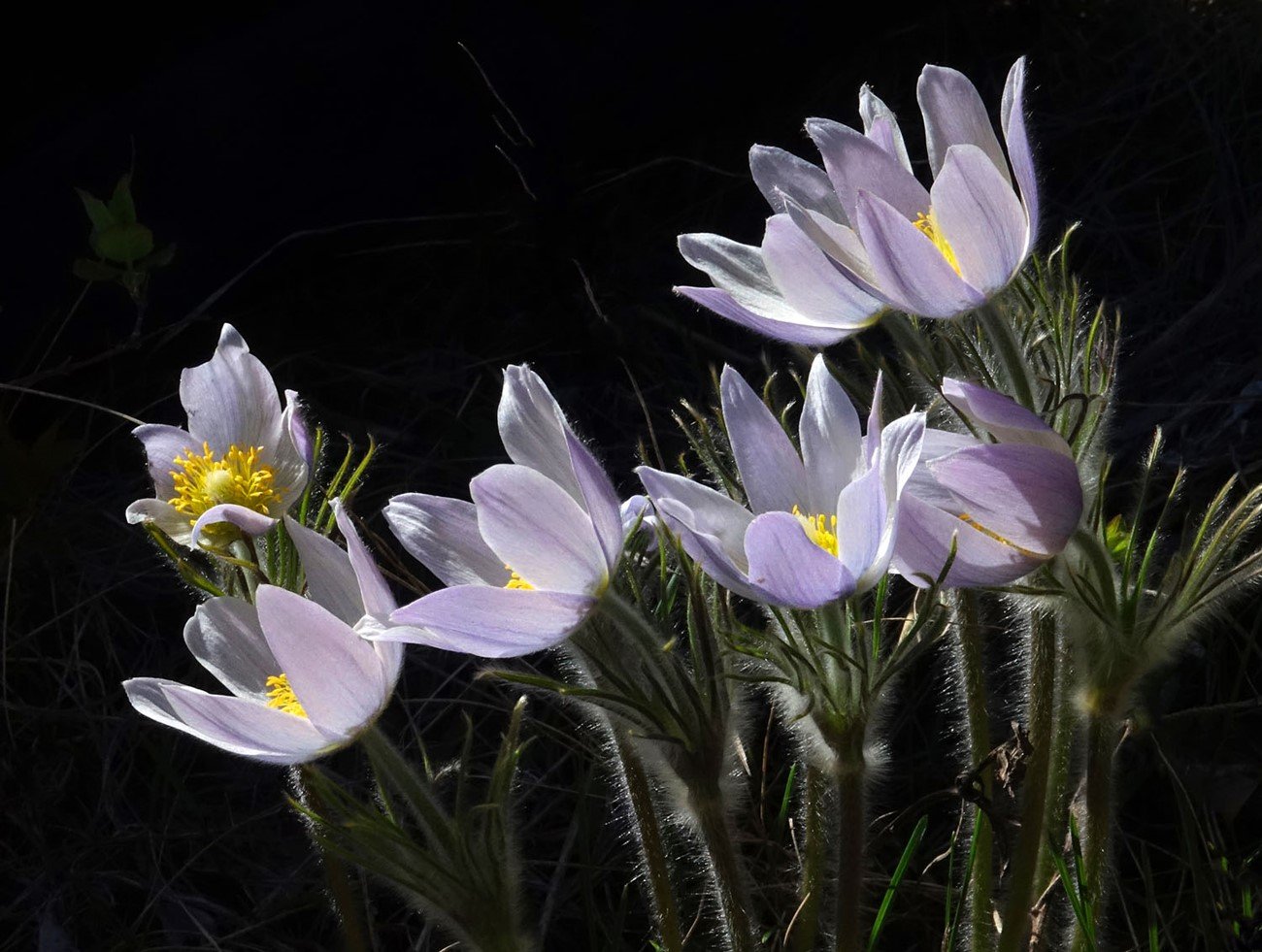April Nature Almanac: March Snows Nourish Fields of Wildflowers
Text and Photos by Stephen Jones, with Ruth Carol Cushman and Scott Severs
April 2024
When 2 to 5 feet of snow fell on Boulder County's foothills and mountains during the second week of March, local wildflower lovers jumped with joy. Following on the heels of the second wettest February in Boulder's 127-year recorded weather history, our moisture-laden March snows portend a wildflower-filled April.
Even before the epic snows, early Easter-daisies (Townsendia exscapa) had begun to ornament sun-warmed shales in the lower foothills. With deep taproots drawing scarce moisture from the shale, the Easter-daisies sometimes begin blooming as early as Thanksgiving, providing a winter nectar source for honeybees and other insects.
This winter the Easter-daisies appeared to bide their time, but by the first week of March, exposed shale slopes in the lower canyons were sprinkled with their cushiony leaf clusters and delicate white blossoms.
By late March, clusters of pink and white, bell-shaped kinnikinnick (Arctostaphylos uva-ursi) blossoms nestled among patches of leathery green leaves beneath foothills ponderosa pines. The Latin species name for this low-growing member of the Manzanita family translates as "grape of the bear" and reflects the nutritious benefits of both the ivory-white blossoms, which open just as bears are emerging from hibernation, and the pea-sized, reddish fruits, which taste faintly like apples.
Where kinnikinnick blossoms are found, clumps of delicate pink spring beauties (Claytonia rosea) emerge from the pine duff. On sunny mornings their exquisite blossoms attract honeybees, miner bees, and bumblebees, along with a variety of flies and butterflies.
In foothills grasslands, star-like sand lilies (Lucocrinum montanum) ornament rocky slopes throughout April. Their flower petals are sweet and succulent -- good survival food for small mammals during a cold and challenging time of year. The sand lily is our only species within the genus Lucocrinum and grows exclusively in grasslands, deserts, and mountain meadows of western North America.
Dazzling yellow violets (Viola nuttallii) emerge in the same locations, often in micro-habitats partially shaded by rocks. Violet flowers have deep nectaries that attract a host of pollinating insects, including bees and flies. The flowers mature into narrow yellow seed pods which open explosively, scattering the seeds across the prairie.
While among the most colorful of foothills wildflowers, Lambert’s locoweed (Oxytropis lambertii) is also among the most toxic. Locos can be distinguished from similar-appearing milkvetches by their leafless flower stems. Members of both genera can cause disorientation and paralysis in animals who feed on them. In locoweeds, the poison is produced by a fungus (known as an endophyte), that lives symbiotically in the plant cells. The locoweed provides a safe growing environment for the fungus; the fungus biosynthesizes nutrients for plant growth while also producing toxins that protect the locoweed from herbivores.
Not far away, often growing among granite rocks in the shade of ponderosa pines, lavender-blue pasqueflowers (Pulsatilla patens) complete the April wildflower display. Pasqueflowers were named after their blooming time, which occurs around Passover throughout much of their range. Lakota tradition relates how the song of the pasqueflower encouraged the children of other flowering nations to awaken from their winter sleep and spring up from the heart of the earth.
Other April Nature Events
The season’s first insects begin to emerge, including tiger beetles, dragonflies, and butterflies.
Bald Eagles, Red-tailed Hawks, and Great Horned Owls are bringing food to chicks in their nests.
Pampas (Swainson’s) Hawks arrive from the pampas of Argentina, a 6,000 mile trip.
Songbird migration is increasing daily, with sparrows such as Clay-colored, Chipping, and White-crowned Sparrows leading the way.







